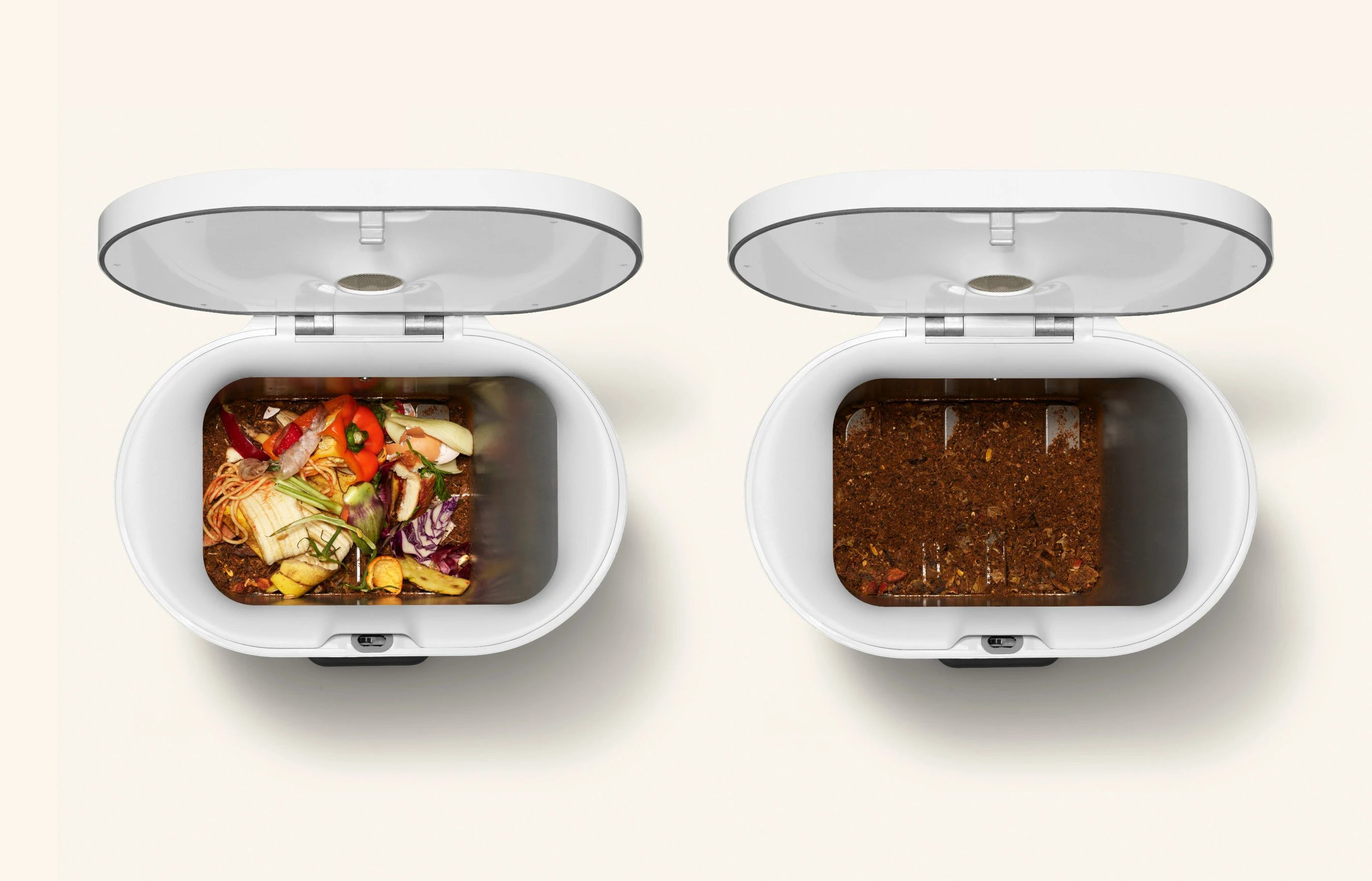There are now several devices that help you keep food waste out of landfills by converting it to compost … but what if you don't have a garden in which that compost can be used? Well, the Mill converts such waste into dried grounds which are sent off to feed chickens.
Manufactured by a California startup of the same name, the Mill is a steel-bodied locking-lidded bin that sits in the user's kitchen. It accepts most types of food waste, exceptions including big bones, large quantities of grease/oil, and large quantities of sugar or sugary foods.
Following a schedule set via an accompanying app, the device dehydrates and grinds the waste on a daily basis (typically overnight), rendering everything down to dried food-waste grounds. A replaceable coconut-husk charcoal filter reportedly keeps odors to a bare minimum during the process.
After a few weeks, once the Mill's collection basket has filled up with grounds, it's removed from the bin so its contents can be dumped into a supplied prepaid shipping box. That box is then sent back to the Mill company so the grounds can be used as a nutritional supplement in chicken feed (after further processing).

The device is now the subject of a pilot project in Tacoma, Washington, and is available for preorder to buyers throughout the US. The cheapest option is a plan in which users are billed $396 annually, and are not charged for the initial delivery of the bin.
So, unless a user has chickens of their own, what's their incentive to use the Mill? Other than simply being eco-conscious?
Well, for one thing, they won't have to take their garbage out as often, nor will their garbage be as attractive to raccoons, mice and other scavengers. Additionally, in cities where citizens are charged waste fees based on the volume of garbage they produce, the savings will offset much of the $396 – some users in Tacoma are reportedly saving over $25 per month.
There's more information in the following video.
Source: Mill






